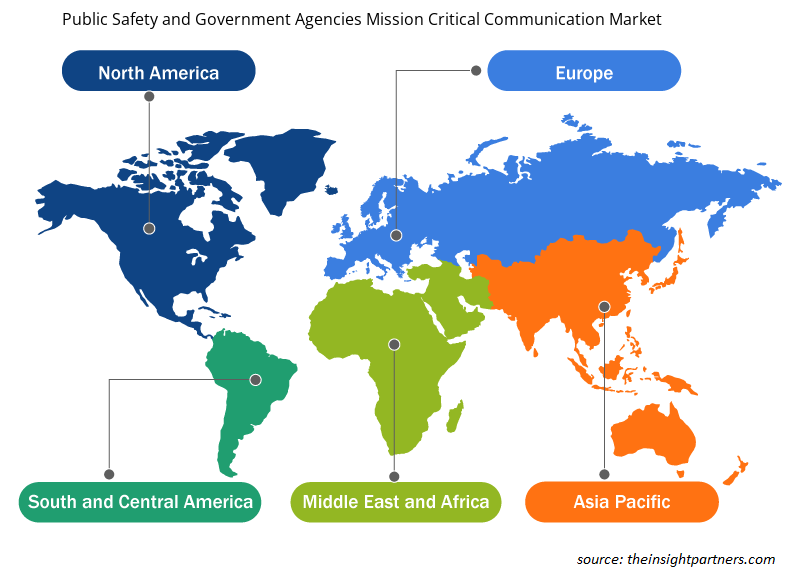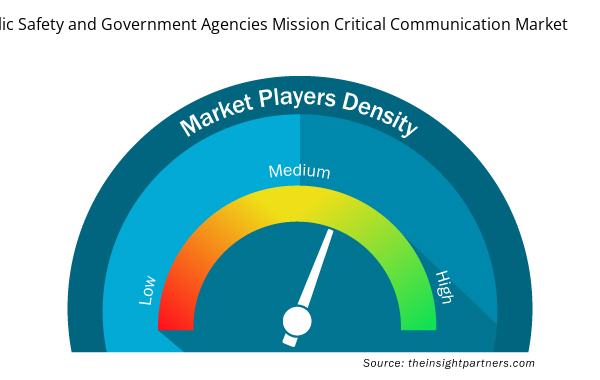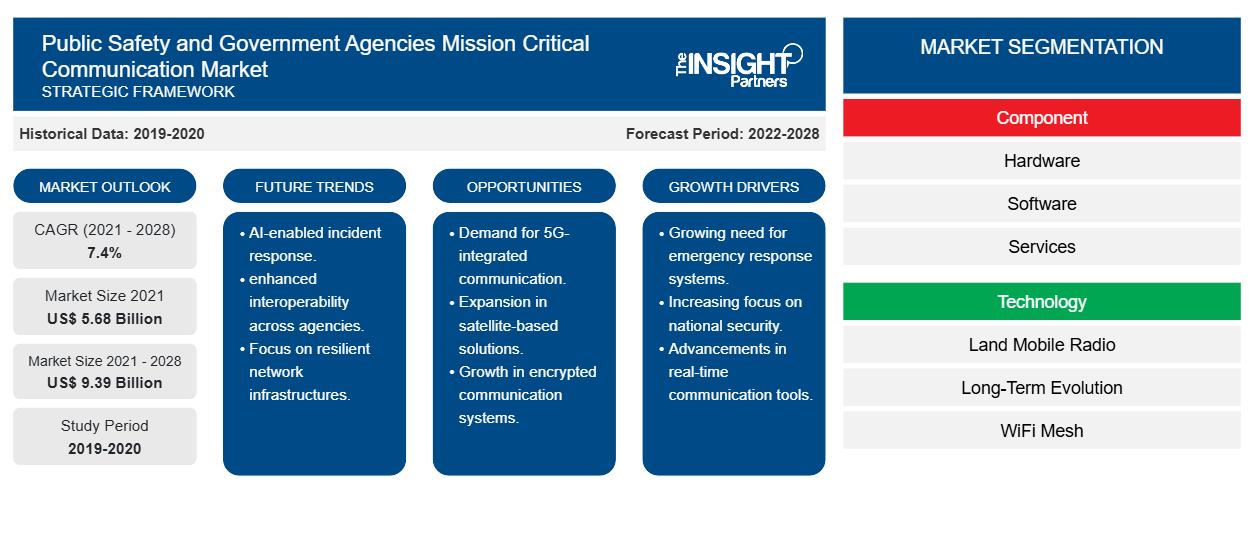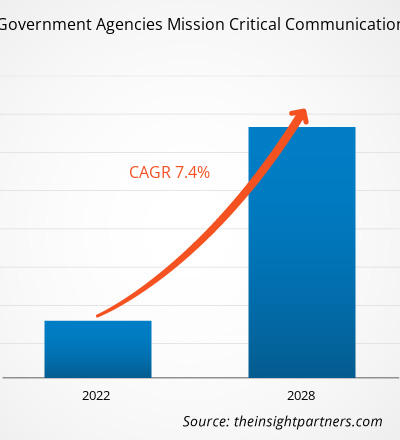공공 안전 및 정부 기관의 임무 수행에 중요한 통신 시장 규모는 2021년에 56억 8,430만 달러로 평가되었으며, 2028년까지 93억 9,000만 달러에 도달할 것으로 예상됩니다. 2021년에서 2028년까지 연평균 성장률은 7.4%일 것으로 예상됩니다.
미션 크리티컬 커뮤니케이션은 기존 시스템이 요구 사항을 충족하지 못하는 상황에서 최종 사용자에게 커뮤니케이션 방법을 지원하는 솔루션을 포함합니다. 또한 공공 안전 및 정부 기관의 미션 크리티컬 커뮤니케이션 시장은 사람과 재산에 위험이 따르는 운영을 지원하고 커뮤니케이션을 용이하게 합니다. 중요한 커뮤니케이션 장치는 사람들에게 중요한 상황에 대해 교육하는 데 사용됩니다. 공공 안전 및 정부 기관의 미션 크리티컬 커뮤니케이션 시장 에서 네트워크 운영자는 빠른 네트워크 및 서비스 진화에 대응하여 안정적인 네트워크 운영을 보장하기 위해 커뮤니케이션 인프라에 대한 새로운 설계 및 관리 전략에 중점을 둡니다.
COVID-19 팬데믹이 공공 안전 및 정부 기관에 미치는 영향 미션 크리티컬 커뮤니케이션 시장
COVID-19 전염병은 북미의 공공 안전 및 정부 기관의 미션 크리티컬 커뮤니케이션 시장에 상당한 영향을 미쳐 최종 사용 산업에 상당한 재정적 손실을 입혔고, 이로 인해 MCX 구현 계획을 더욱 연기하게 되었습니다. 전염병은 또한 공공 안전 및 정부 기관의 미션 크리티컬 커뮤니케이션 시장 하드웨어 제조 현장에서의 운영에도 영향을 미쳐 잠시 중단이 필요했습니다. 그 결과, 몇몇 주요 구성 요소 공급업체와 기술 공급업체가 비용과 생산량을 줄였습니다. 전자 제품에 대한 수요가 일정하게 유지되면서 시장이 성장을 재개하는 데 도움이 되었습니다.
귀하의 요구 사항에 맞게 이 보고서를 사용자 정의하세요
이 보고서의 일부 또는 국가 수준 분석, Excel 데이터 팩을 포함하여 모든 보고서에 대한 사용자 정의를 무료로 받을 수 있으며 신생 기업 및 대학을 위한 훌륭한 혜택과 할인 혜택을 이용할 수 있습니다.
- 이 보고서의 주요 시장 동향을 알아보세요.이 무료 샘플에는 시장 동향부터 추정 및 예측까지 다양한 데이터 분석이 포함됩니다.
시장 통찰력
다양한 정부 기관의 수요 증가로 공공 안전 및 정부 기관의 성장 촉진 임무 수행에 중요한 커뮤니케이션 시장
시민들은 정부 기관으로부터 하루 24시간 서비스와 커뮤니케이션을 기대합니다. 그들은 정확하고 최신 정보에 쉽게 접근할 수 있고 적절한 정부 관리들과 원활하게 연결되기를 원합니다. 그들은 또한 서비스가 신속하고 효과적이며 투명하게 제공되고 문제가 신속하고 효과적이며 공개적으로 해결되기를 원합니다. 많은 정부 기관들은 여전히 임대 PBX 시스템이나 Centrex 유형 시스템과 같은 구식 커뮤니케이션 인프라에 의존하고 있습니다. 또한 공공 안전 및 정부 기관의 미션 크리티컬 커뮤니케이션 시장에서 정부는 공공 영역에서 존경받는 플레이어가 되기 위해 우수한 커뮤니케이션 시스템을 개발하고 유지하고 있습니다. 위의 요소들은 그들이 주민의 필요와 선호도를 평가하고 다중 이해 관계자 참여, 정보에 입각한 정책 토론 및 비상 개발 효능을 위한 심의적 공공 장소를 촉진할 수 있게 합니다. 이러한 모든 문제들은 공공 안전 및 정부 기관의 미션 크리티컬 커뮤니케이션 시장에 대한 수요를 촉진합니다.
구성 요소 기반 시장 통찰력
공공 안전 및 정부 기관의 미션 크리티컬 커뮤니케이션 시장의 하드웨어 구성 요소에는 명령 및 제어 센터, 라우터 및 게이트웨이, 배포 관리 시스템이 포함됩니다. 하드웨어 구성 요소의 배치는 공공 안전 기관의 특성에 따라 다릅니다. 전 세계적으로 보고되는 범죄 수가 증가함에 따라 공공 안전 및 정부 기관의 미션 크리티컬 커뮤니케이션 시장에 대한 수요가 증가하고 있습니다.
기술 기반 시장 통찰력
육상 이동 무선(LMR)은 양방향 무선이라고도 하며, 공공 안전 및 정부 기관의 임무 수행에 중요한 통신 시장에서 가장 널리 사용되는 통신 기술 중 하나입니다. 이 기술은 지속적으로 테스트되고 개선되고 있으며, 특히 공공 안전 분야에서 중요한 통신의 성공 벤치마크로 간주됩니다.
공공 안전 및 정부 기관의 미션 크리티컬 커뮤니케이션 시장에서 제품 개발은 기업이 제품 포트폴리오를 확장하기 위해 일반적으로 채택하는 전략으로, 이를 통해 고객 기반을 확대하고 브랜드 이름을 유지하는 데 도움이 됩니다. 최근 시장에서 이루어진 몇 가지 주요 개발 사항은 다음과 같습니다.
- 2021년 인도네시아 공화국 정부는 Iridium Communications Inc.에서 조달한 500대의 Iridium Push-to-Talk(PTT) 장치를 배치하여 전국의 통신 운영을 강화했습니다. 인도네시아 정부는 이제 전국의 수많은 섬 지역에서 이동 중에 통신하는 데 적합한 안정적인 "그랩앤고" 실시간 위성 통신 솔루션을 보유하고 있습니다.
- 2021년, Inmarsat은 인도의 전략적 파트너인 BSNL이 Inmarsat의 세계적 수준의 Global Xpress(GX) 모바일 브로드밴드 서비스를 제공하는 데 필요한 라이선스를 확보했다고 확인했습니다. GX는 통신부의 BSNL Inflight and Maritime Connectivity(IFMC) 라이선스에 따라 정부, 항공 및 해양 부문의 인도 고객에게 제공됩니다.
공공 안전 및 정부 기관 임무 수행에 중요한 커뮤니케이션 시장 지역 통찰력
Insight Partners의 분석가들은 예측 기간 동안 공공 안전 및 정부 기관의 미션 크리티컬 커뮤니케이션 시장에 영향을 미치는 지역적 추세와 요인을 철저히 설명했습니다. 이 섹션에서는 북미, 유럽, 아시아 태평양, 중동 및 아프리카, 남미 및 중미의 공공 안전 및 정부 기관의 미션 크리티컬 커뮤니케이션 시장 세그먼트와 지리에 대해서도 설명합니다.

- 공공 안전 및 정부 기관을 위한 지역별 데이터 얻기 미션 크리티컬 커뮤니케이션 시장
공공 안전 및 정부 기관 미션 크리티컬 커뮤니케이션 시장 보고서 범위
| 보고서 속성 | 세부 |
|---|---|
| 2021년 시장 규모 | 56억 8천만 달러 |
| 2028년까지 시장 규모 | 93억 9천만 달러 |
| 글로벌 CAGR (2021-2028) | 7.4% |
| 역사적 데이터 | 2019-2020 |
| 예측 기간 | 2022-2028 |
| 다루는 세그먼트 | 구성 요소별로
|
| 포함된 지역 및 국가 | 북아메리카
|
| 시장 선도 기업 및 주요 회사 프로필 |
|
공공 안전 및 정부 기관 미션 크리티컬 커뮤니케이션 시장 참여자 밀도: 비즈니스 역학에 미치는 영향 이해
공공 안전 및 정부 기관 미션 크리티컬 커뮤니케이션 시장은 소비자 선호도의 변화, 기술 발전, 제품의 이점에 대한 인식 증가와 같은 요인으로 인해 최종 사용자 수요가 증가함에 따라 빠르게 성장하고 있습니다. 수요가 증가함에 따라 기업은 제품을 확장하고, 소비자의 요구를 충족하기 위해 혁신하고, 새로운 트렌드를 활용하여 시장 성장을 더욱 촉진하고 있습니다.
시장 참여자 밀도는 특정 시장이나 산업 내에서 운영되는 회사나 기업의 분포를 말합니다. 주어진 시장 공간에 얼마나 많은 경쟁자(시장 참여자)가 존재하는지 그 규모나 총 시장 가치에 비해 나타냅니다.
공공 안전 및 정부 기관의 미션 크리티컬 커뮤니케이션 시장에서 운영되는 주요 회사는 다음과 같습니다.
- Ascom Holding AG (Ascom)
- 글로벌스타
- 인마샛 글로벌 리미티드
- 이리듐 커뮤니케이션즈 주식회사
- 엔비엔 주식회사
면책 조항 : 위에 나열된 회사는 어떤 특별한 순서에 따라 순위가 매겨지지 않았습니다.

- 공공 안전 및 정부 기관의 미션 크리티컬 커뮤니케이션 시장 주요 주요 업체 개요를 알아보세요.
공공 안전 및 정부 기관 임무 수행에 중요한 커뮤니케이션 시장 세분화:
구성 요소별로
- 하드웨어
- 소프트웨어
기술로
- 롱텀 에볼루션(LTE)
- 육상 이동 무선 (LMR)
- 와이파이 메시
회사 프로필
- Ascom Holding AG (Ascom)
- 글로벌스타
- 인마샛 글로벌 리미티드
- 이리듐 커뮤니케이션즈 주식회사
- 엔비엔 주식회사
- 세스 SA
- 텔레샛
- 투라야 통신 회사
- AT&T 주식회사
- 스페이스엑스
- 역사적 분석(2년), 기준 연도, CAGR을 포함한 예측(7년)
- PEST 및 SWOT 분석
- 시장 규모 가치/양 - 글로벌, 지역, 국가
- 산업 및 경쟁 환경
- Excel 데이터 세트


- Photo Printing Market
- Cosmetic Bioactive Ingredients Market
- Broth Market
- Virtual Event Software Market
- Fish Protein Hydrolysate Market
- Artificial Intelligence in Defense Market
- Saudi Arabia Drywall Panels Market
- Sterilization Services Market
- Vision Guided Robotics Software Market
- Batter and Breader Premixes Market

Report Coverage
Revenue forecast, Company Analysis, Industry landscape, Growth factors, and Trends

Segment Covered
This text is related
to segments covered.

Regional Scope
North America, Europe, Asia Pacific, Middle East & Africa, South & Central America

Country Scope
This text is related
to country scope.
자주 묻는 질문
North America is known for placing a high value on public safety, with regional and national governments devoting large resources to the cause. For example, in 2020, the New York Police Department had a budget of $5.92 billion, the Los Angeles Police Department had a budget of $1.86 billion, the Chicago Police Department had a budget of $1.76 billion, the Philadelphia Police Department had a budget of $4.9 billion, and the Toronto Police Department had a budget of $1.22 billion.
In terms of market share, the market was dominated by the Long-Term Evolution (LTE) segment, which accounted for 49.7% of the total market share in 2020 and is expected to reach 47.8% of the market share by 2028. Long term evolution (LTE), commonly known as 4G (Fourth Generation) wireless standard, offers increased network capacity and speed for cellular communication devices. LTE offers up to 100 Mbps of download and 30 Mbps upload speed. One of the biggest advantages of using LTE in mission critical communication is data connectivity. Prior to LTE, the mission critical communication was majorly voice based with limited data usage. The introduction of LTE bought a wide range of applications, such as broadcasting or multi-casting, live streaming, and device-to-device communications in mission critical communication. LTE is capable of unify the existing mission critical networks based on disparate technologies, such as terrestrial trunked radio (TETRA), ultra high frequency (UHF), and very high frequency (VHF). Moreover, with the increasing use of connected devices such as drones and cameras by public safety agencies, the adoption of LTE for mission critical communication is expected to witness a significant growth during the forecast period.
A few key players operating in the public safety and government agencies mission critical communication (MCX) market are Ascom Holding AG (Ascom), Globalstar, Inmarsat Global Limited, Iridium Communications Inc., nbn co ltd., SES S.A., Telesat, Thuraya Telecommunications Company, AT&T Inc., and SPACEX, which are profiled in the report.
The global Public Safety and Government agencies mission critical communication (MCX) market was dominated by the hardware segment in 2020, which accounted for 49.1% of market share. The hardware segment is anticipated to continue its dominance during the forecast period as well. The mission critical communication is one of the prominent systems offering public safety agencies a dedicated communication platform. The hardware component of mission critical communication consists of command and control center, router and gateways, and distribution management system. The deployment of hardware component various and differs according to the nature of public safety agency. The growing number of criminal reporting across the world propels the demand for mission critical communications by public safety agencies worldwide, which drives the market growth for the hardware segment.
Many lives are lost as a result of natural calamities. Some losses could have been avoided if public agencies had offered timely information about the nature of the crisis and how to respond. For example, many lives could have been saved in Thailand in 2004 if PSAs had warned the people of the impending tidal wave. In addition, public warnings can be helpful in situations like terrorist attacks and other catastrophic events, such as the Fukushima Daichi nuclear power plant accident and the Tianjin port explosion. For this reason, public warnings share many characteristics of mission-critical communications. When properly hardened, commercial 3G and 4G networks can provide PSAs with performance and dependability superior to private radio networks. Government agencies can develop additional sites for increased redundancy, capacity, and coverage to raise backhaul bandwidth and improve physical security. The mobile network's resiliency and robustness will be increased due to this 'hardening,' such that in the case of a power outage or network infrastructure damage, the network can remain operational for a prolonged length of time. It is vital to guarantee that the standards for products and services that supply mission-critical communications are of the highest possible quality because there are scenarios where a service failure could have disastrous implications. Therefore, sufficient efforts are made to build resilient products. Mission-critical communications are not limited to a relatively small market, such as public safety, but rather that economies of scale are fully leveraged so that the additional development costs required to ensure the desired quality are shared across a more extensive user base.
The Public Safety and Government agencies mission critical communication (MCX) market is growing because of the global rise in terrorism, public safety, and desire for a reliable network during emergencies. However, the market's growth is hampered by high implementation costs, restricted data transit capabilities, and limited spectrum bandwidth. Government investments in mission-critical communication systems in the defense sector, on the other hand, are likely to generate attractive prospects for the industry in the coming years.
Trends and growth analysis reports related to Electronics and Semiconductor : READ MORE..
The List of Companies - Public Safety and Government Agencies Mission Critical Communication Market
- Ascom Holding AG (Ascom)
- Globalstar
- Inmarsat Global Limited
- Iridium Communications Inc.
- nbn co ltd.
- SES S.A.
- Telesat
- Thuraya Telecommunications Company
- AT&T Inc.
- SPACEX
The Insight Partners performs research in 4 major stages: Data Collection & Secondary Research, Primary Research, Data Analysis and Data Triangulation & Final Review.
- Data Collection and Secondary Research:
As a market research and consulting firm operating from a decade, we have published and advised several client across the globe. First step for any study will start with an assessment of currently available data and insights from existing reports. Further, historical and current market information is collected from Investor Presentations, Annual Reports, SEC Filings, etc., and other information related to company’s performance and market positioning are gathered from Paid Databases (Factiva, Hoovers, and Reuters) and various other publications available in public domain.
Several associations trade associates, technical forums, institutes, societies and organization are accessed to gain technical as well as market related insights through their publications such as research papers, blogs and press releases related to the studies are referred to get cues about the market. Further, white papers, journals, magazines, and other news articles published in last 3 years are scrutinized and analyzed to understand the current market trends.
- Primary Research:
The primarily interview analysis comprise of data obtained from industry participants interview and answers to survey questions gathered by in-house primary team.
For primary research, interviews are conducted with industry experts/CEOs/Marketing Managers/VPs/Subject Matter Experts from both demand and supply side to get a 360-degree view of the market. The primary team conducts several interviews based on the complexity of the markets to understand the various market trends and dynamics which makes research more credible and precise.
A typical research interview fulfils the following functions:
- Provides first-hand information on the market size, market trends, growth trends, competitive landscape, and outlook
- Validates and strengthens in-house secondary research findings
- Develops the analysis team’s expertise and market understanding
Primary research involves email interactions and telephone interviews for each market, category, segment, and sub-segment across geographies. The participants who typically take part in such a process include, but are not limited to:
- Industry participants: VPs, business development managers, market intelligence managers and national sales managers
- Outside experts: Valuation experts, research analysts and key opinion leaders specializing in the electronics and semiconductor industry.
Below is the breakup of our primary respondents by company, designation, and region:

Once we receive the confirmation from primary research sources or primary respondents, we finalize the base year market estimation and forecast the data as per the macroeconomic and microeconomic factors assessed during data collection.
- Data Analysis:
Once data is validated through both secondary as well as primary respondents, we finalize the market estimations by hypothesis formulation and factor analysis at regional and country level.
- Macro-Economic Factor Analysis:
We analyse macroeconomic indicators such the gross domestic product (GDP), increase in the demand for goods and services across industries, technological advancement, regional economic growth, governmental policies, the influence of COVID-19, PEST analysis, and other aspects. This analysis aids in setting benchmarks for various nations/regions and approximating market splits. Additionally, the general trend of the aforementioned components aid in determining the market's development possibilities.
- Country Level Data:
Various factors that are especially aligned to the country are taken into account to determine the market size for a certain area and country, including the presence of vendors, such as headquarters and offices, the country's GDP, demand patterns, and industry growth. To comprehend the market dynamics for the nation, a number of growth variables, inhibitors, application areas, and current market trends are researched. The aforementioned elements aid in determining the country's overall market's growth potential.
- Company Profile:
The “Table of Contents” is formulated by listing and analyzing more than 25 - 30 companies operating in the market ecosystem across geographies. However, we profile only 10 companies as a standard practice in our syndicate reports. These 10 companies comprise leading, emerging, and regional players. Nonetheless, our analysis is not restricted to the 10 listed companies, we also analyze other companies present in the market to develop a holistic view and understand the prevailing trends. The “Company Profiles” section in the report covers key facts, business description, products & services, financial information, SWOT analysis, and key developments. The financial information presented is extracted from the annual reports and official documents of the publicly listed companies. Upon collecting the information for the sections of respective companies, we verify them via various primary sources and then compile the data in respective company profiles. The company level information helps us in deriving the base number as well as in forecasting the market size.
- Developing Base Number:
Aggregation of sales statistics (2020-2022) and macro-economic factor, and other secondary and primary research insights are utilized to arrive at base number and related market shares for 2022. The data gaps are identified in this step and relevant market data is analyzed, collected from paid primary interviews or databases. On finalizing the base year market size, forecasts are developed on the basis of macro-economic, industry and market growth factors and company level analysis.
- Data Triangulation and Final Review:
The market findings and base year market size calculations are validated from supply as well as demand side. Demand side validations are based on macro-economic factor analysis and benchmarks for respective regions and countries. In case of supply side validations, revenues of major companies are estimated (in case not available) based on industry benchmark, approximate number of employees, product portfolio, and primary interviews revenues are gathered. Further revenue from target product/service segment is assessed to avoid overshooting of market statistics. In case of heavy deviations between supply and demand side values, all thes steps are repeated to achieve synchronization.
We follow an iterative model, wherein we share our research findings with Subject Matter Experts (SME’s) and Key Opinion Leaders (KOLs) until consensus view of the market is not formulated – this model negates any drastic deviation in the opinions of experts. Only validated and universally acceptable research findings are quoted in our reports.
We have important check points that we use to validate our research findings – which we call – data triangulation, where we validate the information, we generate from secondary sources with primary interviews and then we re-validate with our internal data bases and Subject matter experts. This comprehensive model enables us to deliver high quality, reliable data in shortest possible time.


 이 보고서에 대한 무료 샘플을 받으세요
이 보고서에 대한 무료 샘플을 받으세요